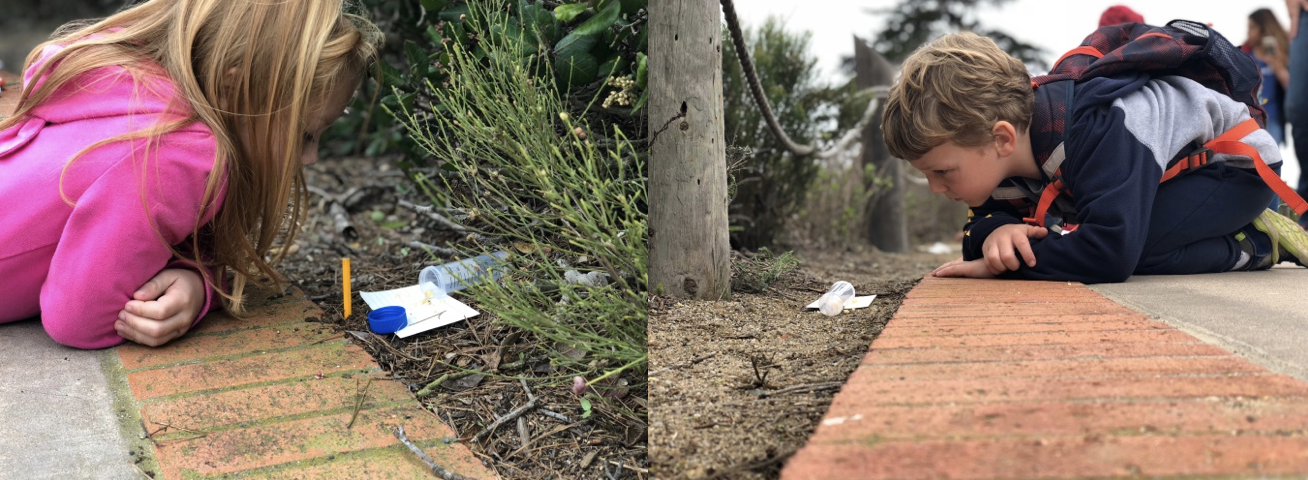Ants. You may not notice them until they are eating some crumbs that were left out from the night before however, ants play a significant role in our ecosystem. Many ants are predators that maintain insect populations from taking over specific areas, while other ant species often pollinate plants, distribute seeds, and fertilize the soil.
They may be small, but they have a big job.
San Diego county is estimated to have several hundred ant species, including the invasive Argentine ant. The Argentine ant, Linepithema humile, has caused disruption in our local habitats by displacing native ant species. Thus, researchers at the University of California, San Diego are working hard to categorize the area in which the Argentine ant occupies, particularly Cabrillo National Monument.
 NPS Photo/Nicole Ornelas -High Tech High student actively looking for any sign of ant species at Cabrillo National Monument.
NPS Photo/Nicole Ornelas -High Tech High student actively looking for any sign of ant species at Cabrillo National Monument. With the help from over 250 students (kindergarten through eleventh grade), over 100 chaperone volunteers, 14 teachers, four schools, two UC San Diego ant specialists and Cabrillo National Monument staff, we were able to survey 60 sites across the Point Loma Peninsula.
Within this three-hour survey, Argentine ants were confirmed at 12 of the 60 sites and seven native ant species were confirmed at 18 of the sites. The native ant species identified includes the Winter ant (Prenolepis impairs), Thief ant (Solenopsis molesta), Acrobat ant (Crematogaster californica), Fire ant (Solenopsis xyloni), Little Black ant (Monomorium minimum), Pseudo ant (Pseudomyrmex), and Pheidole hyatti.
This data will be used by Argentine ant researchers at UC San Diego and by park management to help better manage this extraordinary place. More students will be returning in the Spring to obtain further data about the ant species that inhabit Cabrillo National Monument. Stay tuned.
